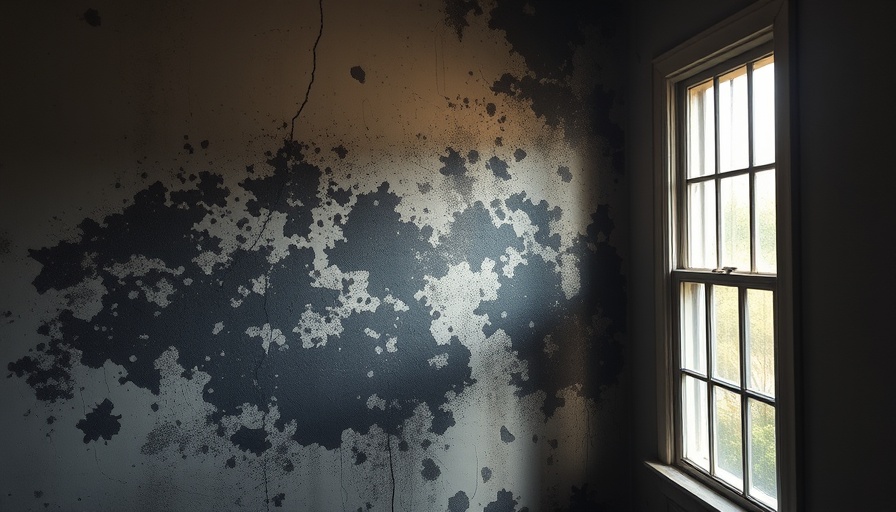
Understanding the Mold Threat in Humid Weather
As the warm, sticky months approach, homeowners must be vigilant against mold growth. Humidity isn’t just an uncomfortable nuisance; it creates the perfect environment for mold to take hold and thrive. Mold spores that love damp conditions can multiply quickly, posing a potential risk for health and structural integrity.
Why Mold Thrives in Humid Conditions
Mold requires moisture, warmth, and organic material to grow. With humidity levels rising, particularly above 60%, the risk of mold infestations increases significantly. This chapter explores the specific conditions that foster mold’s growth, making it paramount for homeowners to take preemptive measures.
Controlling Indoor Humidity Levels: Your First Line of Defense
To effectively combat mold, managing indoor humidity is essential. According to experts, keeping indoor humidity between 30% and 50% minimizes the chances for mold to establish itself.
Dehumidifiers are Essential: Especially in high-humidity regions, a quality dehumidifier can significantly reduce moisture levels at home.
Air Conditioning to the Rescue: Not only do air conditioners cool your home, but they also help by lowering humidity. Regular maintenance ensures they function effectively.
Proper Ventilation: Always use exhaust fans in kitchens and bathrooms. Keeping doors and windows open when possible can also enhance airflow.
Sealing the Leaks: Guard Against Mold Entry Points
Every drop of water counts when it comes to mold prevention. Homeowners need to regularly check for leaks in plumbing systems and roofs. Here are a few practical checks you can perform:
Inspect areas under sinks for plumbing leaks.
Check windows and doors for drafts that may allow moisture and humidity to enter.
Seal any compromised areas using waterproof caulk and retain the services of a professional when necessary.
Ventilation: Not Just Optional, It's Vital
Poor airflow leads to excess moisture, and this is where mold loves to thrive. To ensure adequate ventilation:
Install exhaust fans in areas prone to moisture.
Utilize ceiling fans and oscillating fans to circulate air throughout your home.
Open windows whenever the weather allows to enable natural airflow.
Consistent Drying Protocols: Simple Yet Effective
Be proactive in your approach by drying wet areas promptly. Here are key practices to incorporate into your cleaning routine:
Always dry damp towels and clothing immediately.
Wipe down surfaces after spills, particularly in kitchens and bathrooms.
Consider using absorbent materials for mats and rugs that dry quickly.
Frequent Mold Inspections: Stay One Step Ahead
An ounce of prevention is worth a pound of cure. Regular mold testing is vital to ensure your home remains healthy and mold-free. It’s recommended to consult with certified mold inspection professionals who can help identify hidden mold sources and provide adequate treatment recommendations.
Conclusion: Staying Ahead of Mold
In humid weather, keeping your home mold-free requires diligence and proactive strategies. By controlling indoor humidity, sealing leaks, ensuring proper ventilation, promptly drying surfaces, and conducting regular inspections, you firmly establish your defenses against mold growth.
If you’re looking for tailored advice on how to ensure a mold-free home in humid weather, contact your local mold remediation expert to learn more about maintenance plans. Acting now will help protect your health and maintain your home's integrity.
#moldprevention, #humiditycontrol, #moldgrowth, #homeventilation, #dehumidifiers
 Add Row
Add Row  Add
Add 




 Add Row
Add Row  Add
Add 


Write A Comment